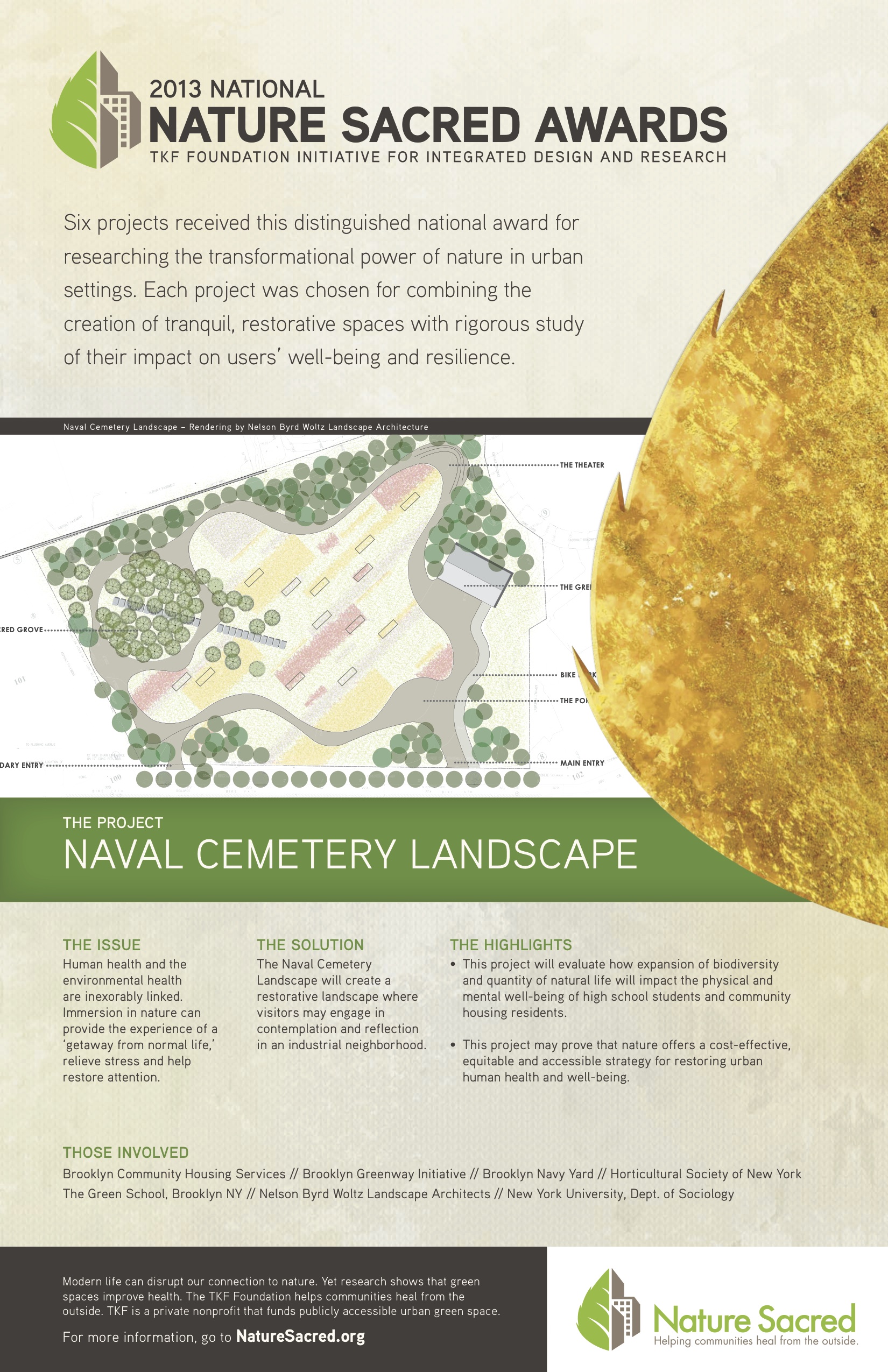Six projects received this distinguished national award for researching the transformational power of nature in urban settings. Each project was chosen for combining the creation of tranquil, restorative spaces with rigorous study of their impact on users’ well-being and resilience. See the full list of projects here. Print version of poster. More Naval Cemetery Landscape team member interviews: Sara Hobel, Thomas Woltz
Milton Puryear never dreamed his organization would ever find a grant opportunity that would help them prove something they’d been espousing for years. Puryear, the founder of the Brooklyn Greenway Initiative, explained his organization’s belief: “Relief from the built environment helps with mental health and life outcomes. We want to provide a facility that makes living in the city better.” And now, the Nature Sacred Award will help them do just that.
As one node of the Brooklyn Greenway Initiative – a 14-mile commuting route for non-motorized transportation – the Naval Cemetery Landscape project will seek to provide restorative relief to individuals from the urban environment. Sited atop an old cemetery at the former Brooklyn Navy Yard, this new meadow will revitalize the native plant and pollinator populations in the region and attract other forms of life that depend on thriving numbers of these native inhabitants.
As Puryear explains, experiences with nature where there is a significant amount of biodiverse activity allow visitors to escape from the built environment and achieve psychological restoration. For people to develop mentally and emotionally, they crave a neurological rest – and one way to achieve this is through exposure to nature. Without such mental breaks, the social and intellectual capacity of individuals is greatly limited – and when the same is true for entire urban populations, this begins to impact society as a whole.
The Nature Sacred Award from the TKF Foundation will allow Puryear and his team to construct a sustainable landscape that restores the balance of the local environment while offering a space where visitors can engage in contemplation and reflection.
“We think the site will offer visitors many metaphors that they can take away and use in their own lives,” noted Puryear. “The resiliency of the site, the annual renewal each spring, the life activity of insects and birds chasing insects – we believe those experiences will provide metaphors for the possibilities in one’s own life.”
Puryear and the team’s researchers have partnered with The Green School of East Williamsburg and Brooklyn Community Housing and Services to develop the space and study the effects of nature on stressed communities. In conjunction with The Green School, the team has also developed a ninth grade science curriculum based on the planned meadow. Students will learn soil science, hydrology and biology, using the planned space as a laboratory. Following grade nine, the students will be invited to join a club that will engage them in steward activities, introducing the public to the site and selling plants to members of the local community.
“Many young people are disengaged…We are hypothesizing that the restoration experienced in a natural setting empowers people to feel more power, more confidence, and a greater desire to thrive,” said Puryear.
And for the Brooklyn Community Housing and Services (BCHS) – who provides housing assistance for community members who have had challenges functioning in society – the Naval Cemetery Landscape project will engage BCHS residents in on-site programs run by The Horticultural Society of New York, encouraging them to interact with the nature available in their nearby community.
The project’s research team, guided by Christopher Weiss, PhD, of NYU’s Applied Quantitative Research Methods Program, will collect data from The Green School students and BCHS residents throughout the lifetime of the project, measuring their reaction and response to the natural space as it develops. The primary intent of the project is to evaluate the extent to which exposure to a natural site impacts people’s engagement with their surroundings, society, and school.
The hope of this project, notes Puryear, lies in proving that there is an economic benefit of these natural spaces that comes from improving life outcomes and increasing community members’ engagement. If young people have access to the natural environment on a regular basis, hopefully education performance will improve, lowering the cost of the education system and the overall societal cost of poor life outcomes. Similarly, community housing residents will ideally engage more with society if the mental break that comes with being in nature is accessible and routine.

